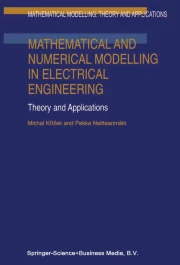
This is a preview of subscription content, log in via an institution to check access.
eBook EUR 149.79
Price includes VAT (France)Softcover Book EUR 189.89
Price includes VAT (France)Hardcover Book EUR 189.89
Price includes VAT (France)Tax calculation will be finalised at checkout
Mathematical modeling plays an essential role in science and engineering. Costly and time consuming experiments (if they can be done at all) are replaced by computational analysis. In industry, commercial codes are widely used. They are flexible and can be adjusted for solving specific problems of interest. Solving large problems with tens or hundreds of thousands unknowns becomes routine. The aim of analysis is to predict the behavior of the engineering and physical reality usually within the constraints of cost and time. Today, human cost and time are more important than computer cost. This trend will continue in the future. Agreement between computational results and reality is related to two factors, namely mathematical formulation of the problems and the accuracy of the numerical solution. The accuracy has to be understood in the context of the aim of the analysis. A small error in an inappropriate norm does not necessarily mean that the computed results are usable for practical purposes.